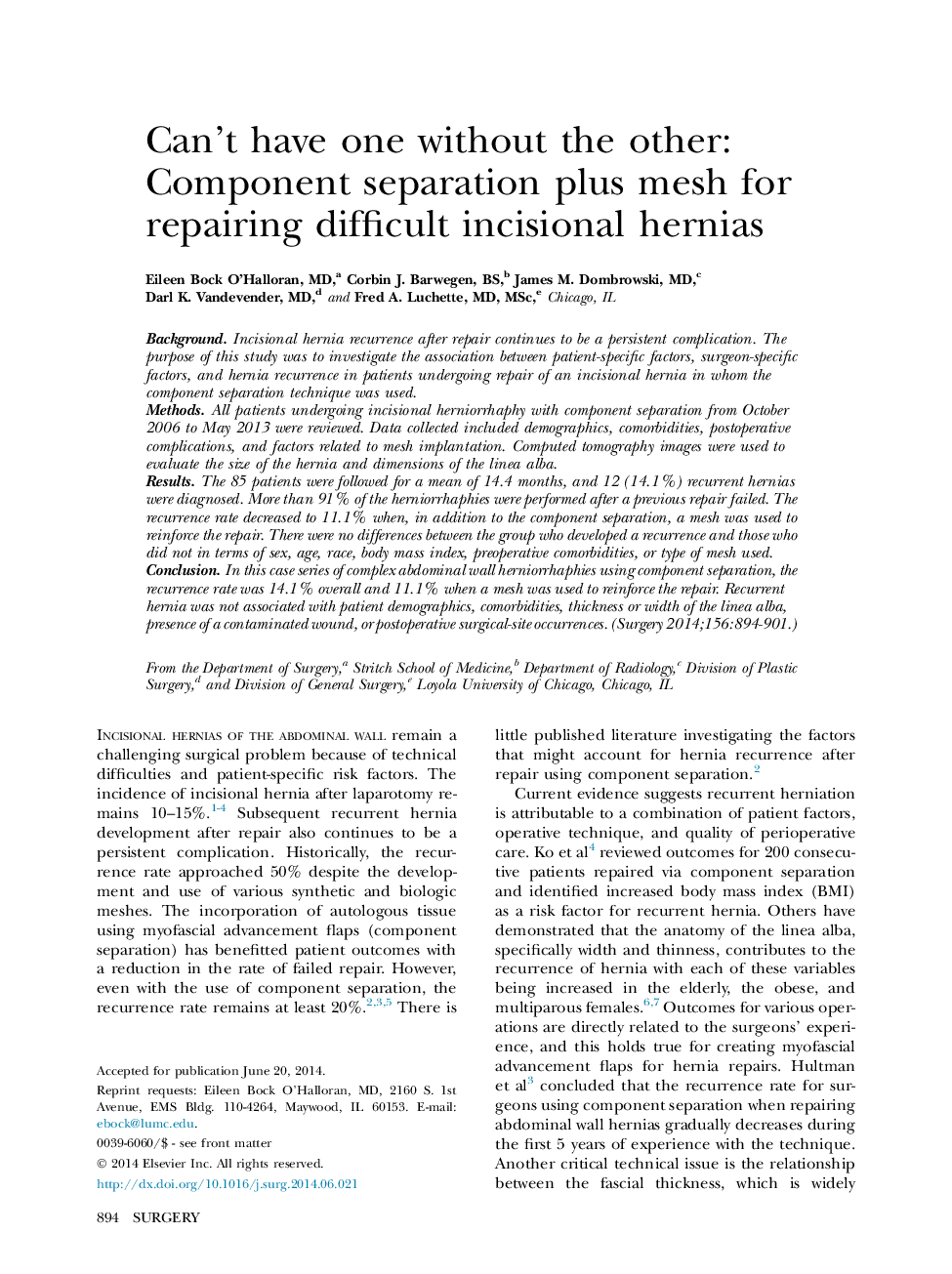| Article ID | Journal | Published Year | Pages | File Type |
|---|---|---|---|---|
| 4307637 | Surgery | 2014 | 8 Pages |
BackgroundIncisional hernia recurrence after repair continues to be a persistent complication. The purpose of this study was to investigate the association between patient-specific factors, surgeon-specific factors, and hernia recurrence in patients undergoing repair of an incisional hernia in whom the component separation technique was used.MethodsAll patients undergoing incisional herniorrhaphy with component separation from October 2006 to May 2013 were reviewed. Data collected included demographics, comorbidities, postoperative complications, and factors related to mesh implantation. Computed tomography images were used to evaluate the size of the hernia and dimensions of the linea alba.ResultsThe 85 patients were followed for a mean of 14.4 months, and 12 (14.1%) recurrent hernias were diagnosed. More than 91% of the herniorrhaphies were performed after a previous repair failed. The recurrence rate decreased to 11.1% when, in addition to the component separation, a mesh was used to reinforce the repair. There were no differences between the group who developed a recurrence and those who did not in terms of sex, age, race, body mass index, preoperative comorbidities, or type of mesh used.ConclusionIn this case series of complex abdominal wall herniorrhaphies using component separation, the recurrence rate was 14.1% overall and 11.1% when a mesh was used to reinforce the repair. Recurrent hernia was not associated with patient demographics, comorbidities, thickness or width of the linea alba, presence of a contaminated wound, or postoperative surgical-site occurrences.
